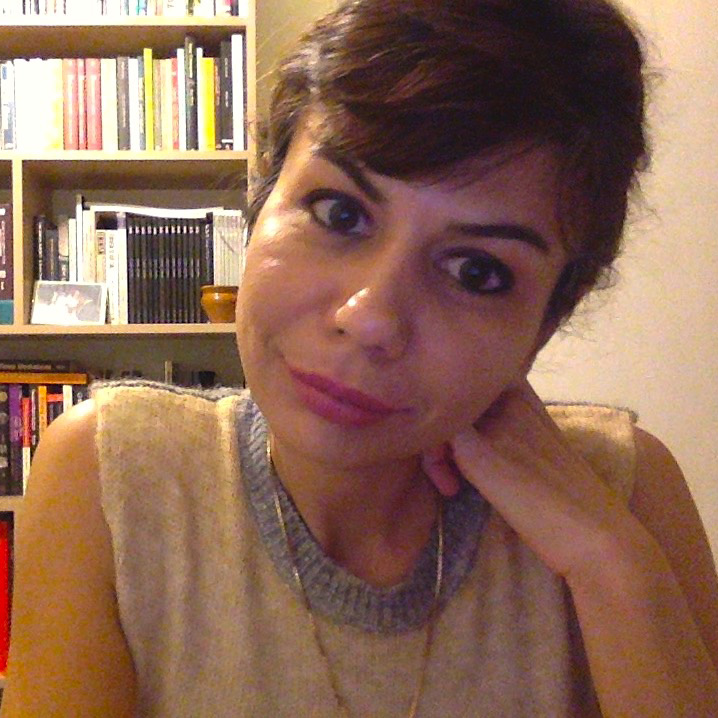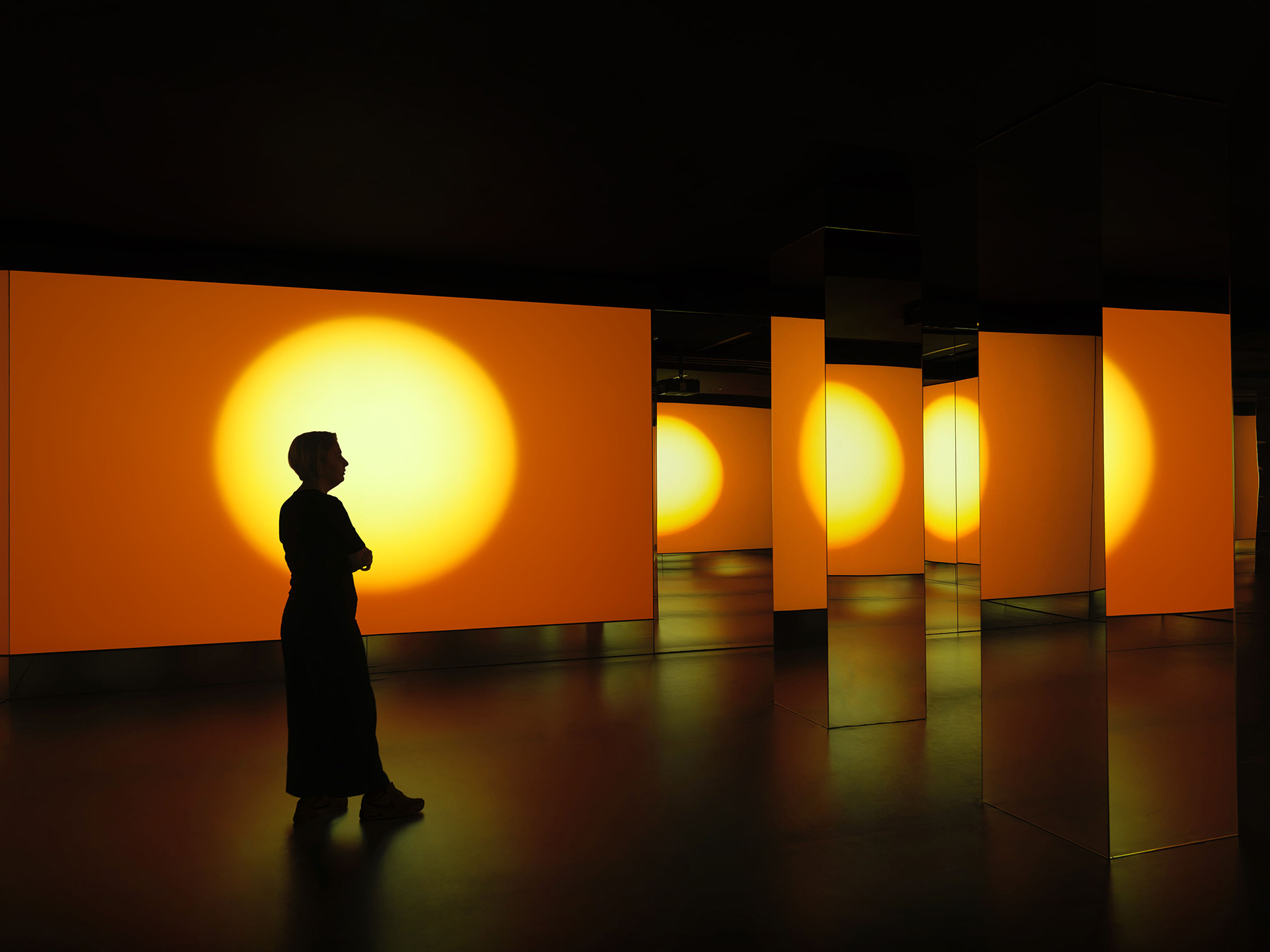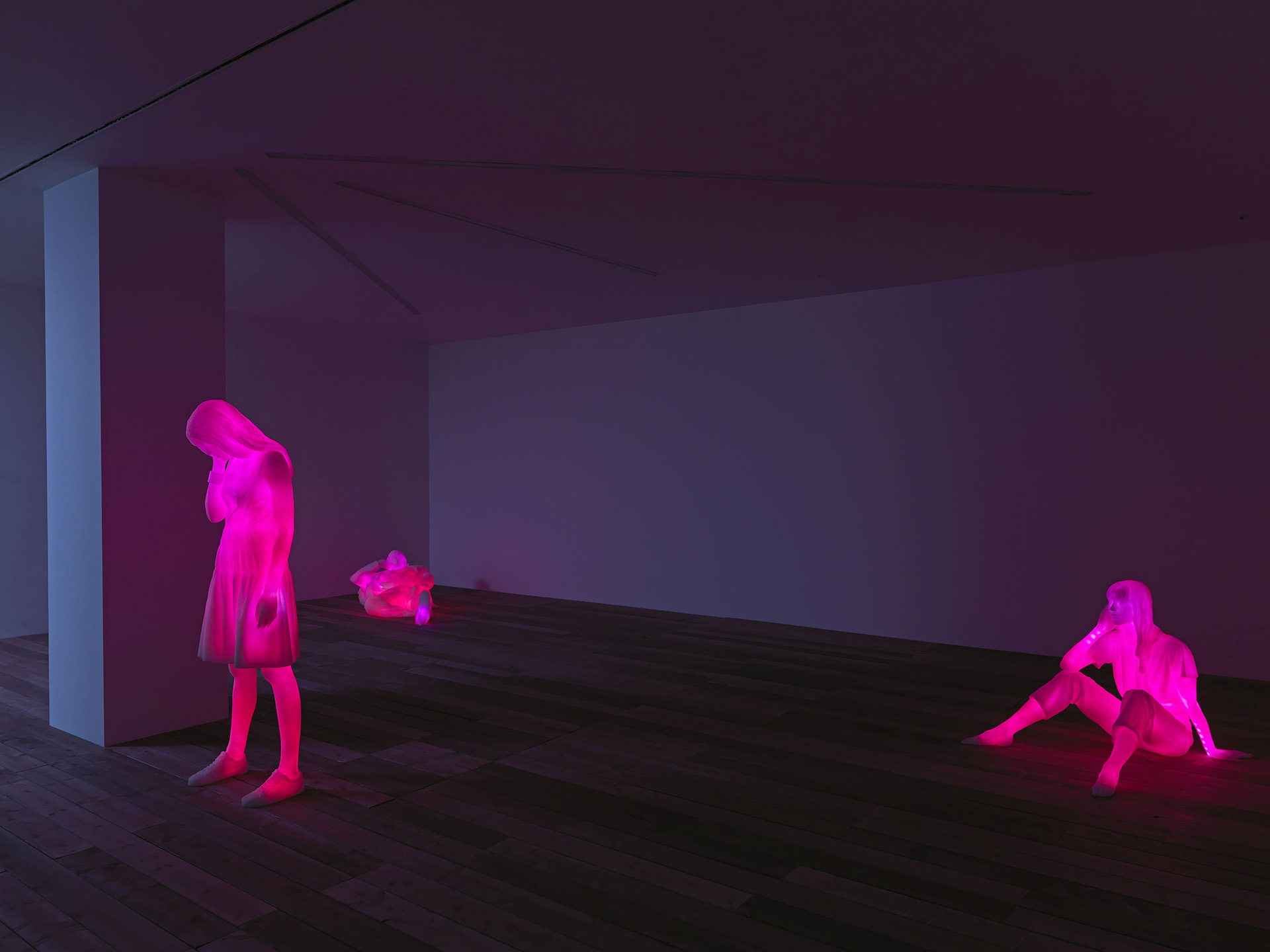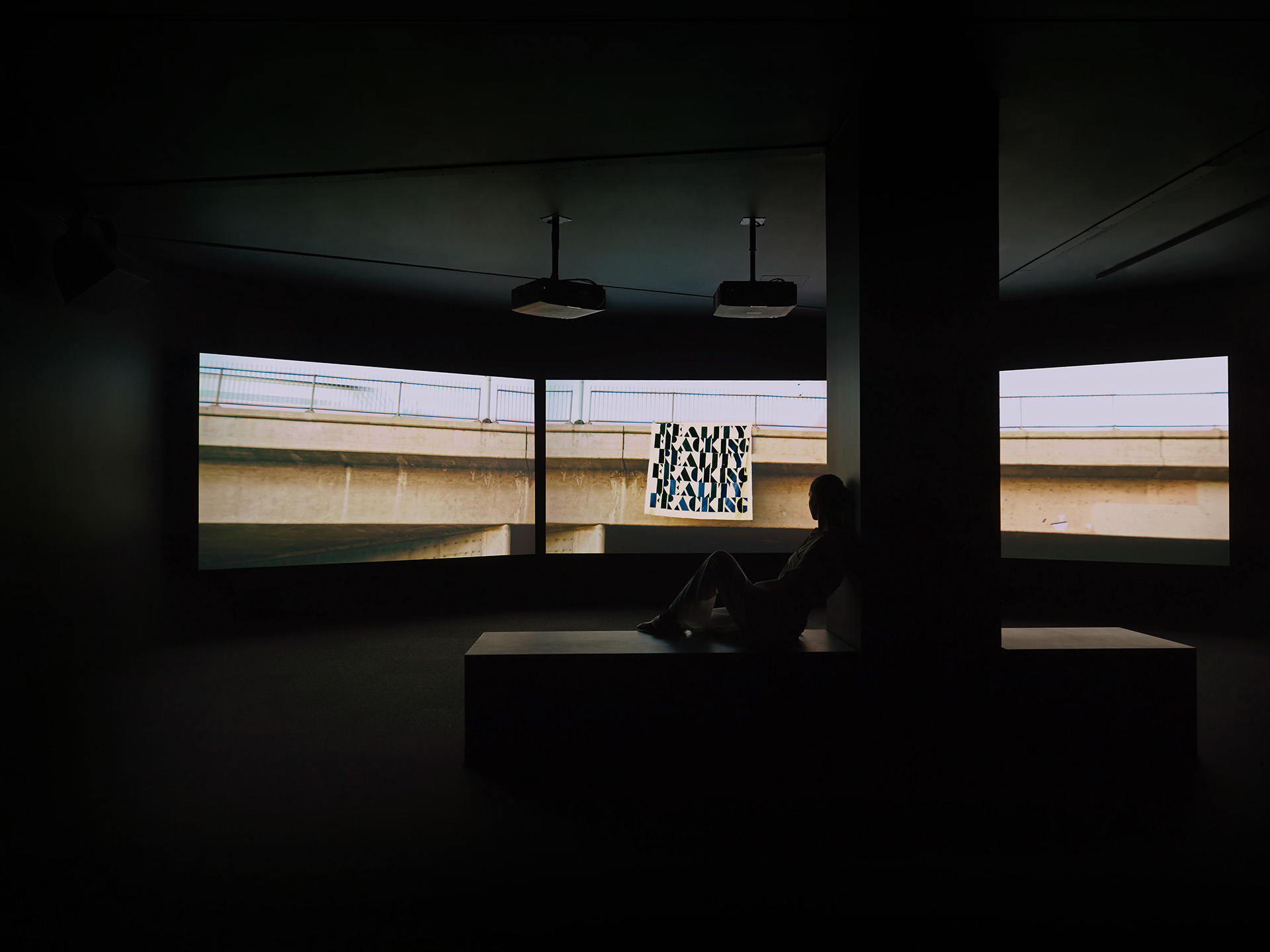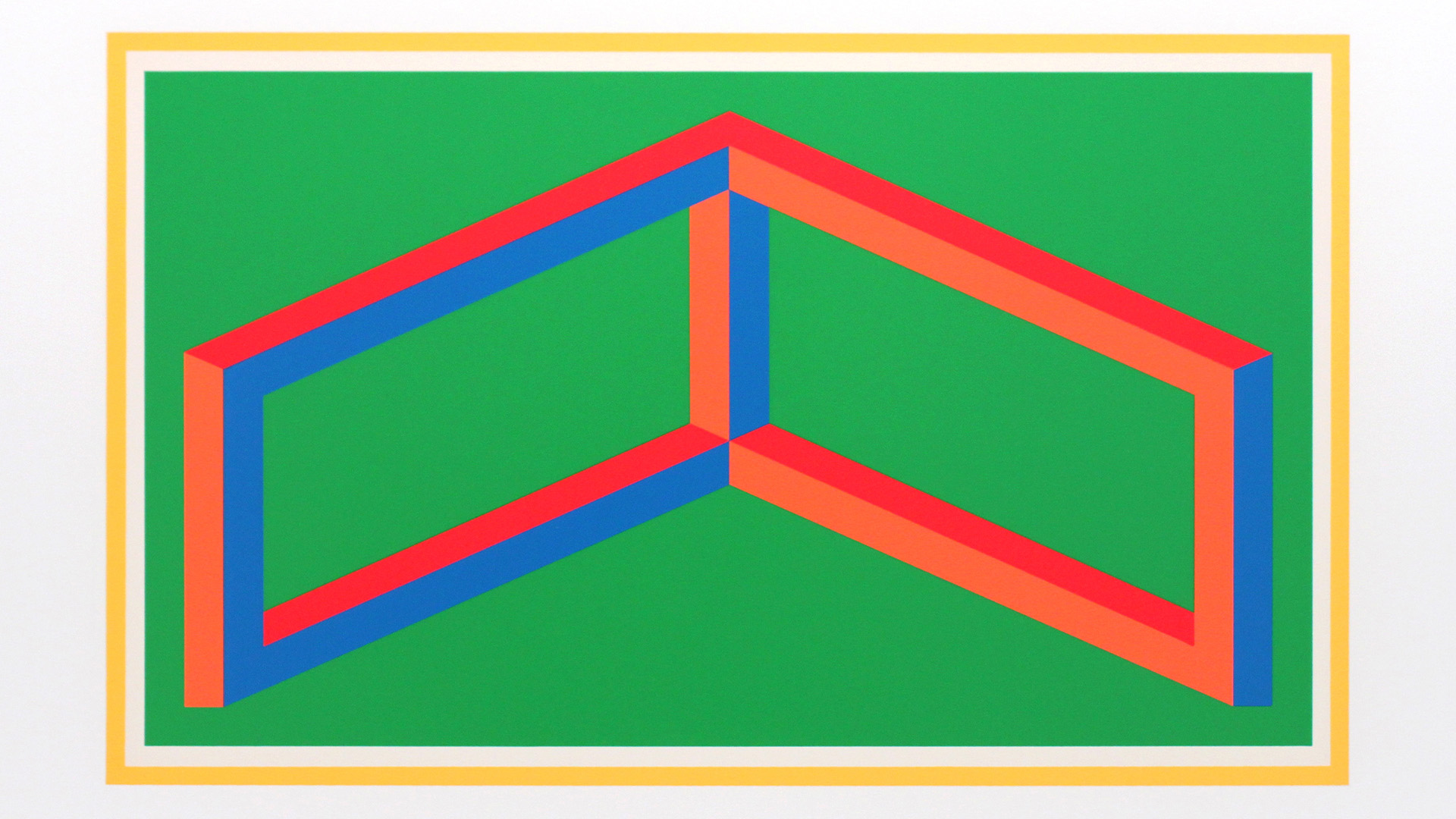Blog
Stitching Together in Doug Aitken’s Naked Cities
12 August 2025 Tue
People hurried past, the others of the street, endless anonymous, twenty-one lives per second, race-walking in their faces and pigments, sprays of fleetest being. (…) He stopped looking at computer screens and turned to the street. (…) He felt the street around him, unremitting, people moving past each other in coded moments of gesture and dance. (…) A quarter second of a shared glance was a violation of agreements that made the city operational. (...) There was a pact of untouchability. Even here, in the huddle of old cultures, tactile and close-woven, with passersby mixed in, and security guards, and shoppers pressed to windows, and wandering fools, people did not touch each other. 1
In Naked City, a solo introspective exhibit of various works by Doug Aitken curated by Jérôme Sans for Borusan Contemporary, the protagonist is the urban dweller. A figure shattered into many parts, this urban dweller that presides over the exhibition becomes a reflection of the contemporary city that “itself has become not only the domain of (a) networked cognitive system, but also—and crucially—the spatial and material embodiment of that system.” 2 Torn apart, fragmented and then thrown together in an almost haphazard fashion, the Cartesian subject here becomes a myth of the distant past impossible (and even if it were so, no longer relevant) to maintain in a city where digital access to an infinite network of instant information seems to amount to so much atomization. In Aitken’s work, mirrors, fragments of reflective surfaces, pieces of fabric, and particles of light become expressions of this atomization whereby isolated individuals encounter particles of data, scintillates of affect, and specks of experience. Naked City already signals this theme at the lobby of the Haunted Mansion where we are greeted by Ascending Staircase (2024) - Aitken’s site-specific piece that fragments and reflects in a moving fashion the visitors’ relationship to themselves and their environment. This altered phenomenological experience that highlights the fragmentation and alterity within our contemporary environments is furthered in sleepwalkers(2007). First installed as an outdoor exhibit projected on the façades of MoMA in New York, this multi-channel videofollows in snippets the daily wanderings of five New York dwellers, each around one borough of the city that seem to reflect each other across several screens. In its installment particularly designed for the Haunted Mansion, the fragmentation and isolation of the city dwellers reach new heights as the mirrored gallery walls multiply, refract, and shatter both the protagonists on the screens and the visitors looking at them. Such a projection of the visitors onto the virtual urban fabrics unfolding within the screen worlds implies the viewers themselves as part of this urban experience taking in their fair share of isolation and fragmentation.
Such an urban experience of shattering is especially evident in 3 Modern Figures (don’t forget to breathe) (2018), three life-size figures so intensely absorbed in their smartphones that they seem to ignore one another despite their relatively close positions in the gallery. Bathed in colored LED lights to further emphasize this absorption in the digital flow of infinite data and information, these figures bring to life what Guy Debord once described as the dissolution of all social bonds into spectatorial relationships: “Spectators are linked only by a one-way relationship to the very center that maintains their isolation from one another. The spectacle thus unites what is separate, but it unites it only in its separateness.” 3 For Debord, such separation is also part and parcel of the subject itself, whereby the technological exile of humans from actual lifeworlds 4 culminates in a fragmentation within.5 Aitken’s three figures could indeed represent various personifications of a single subject fragmented into a variety of identities. While doing away with the Cartesian subject and its claims to authority, centeredness, and stability is a positive development, whether we manage to retain our social bonds within this ephemeral network raises a concern that seems to occupy Aitken’s work as well.
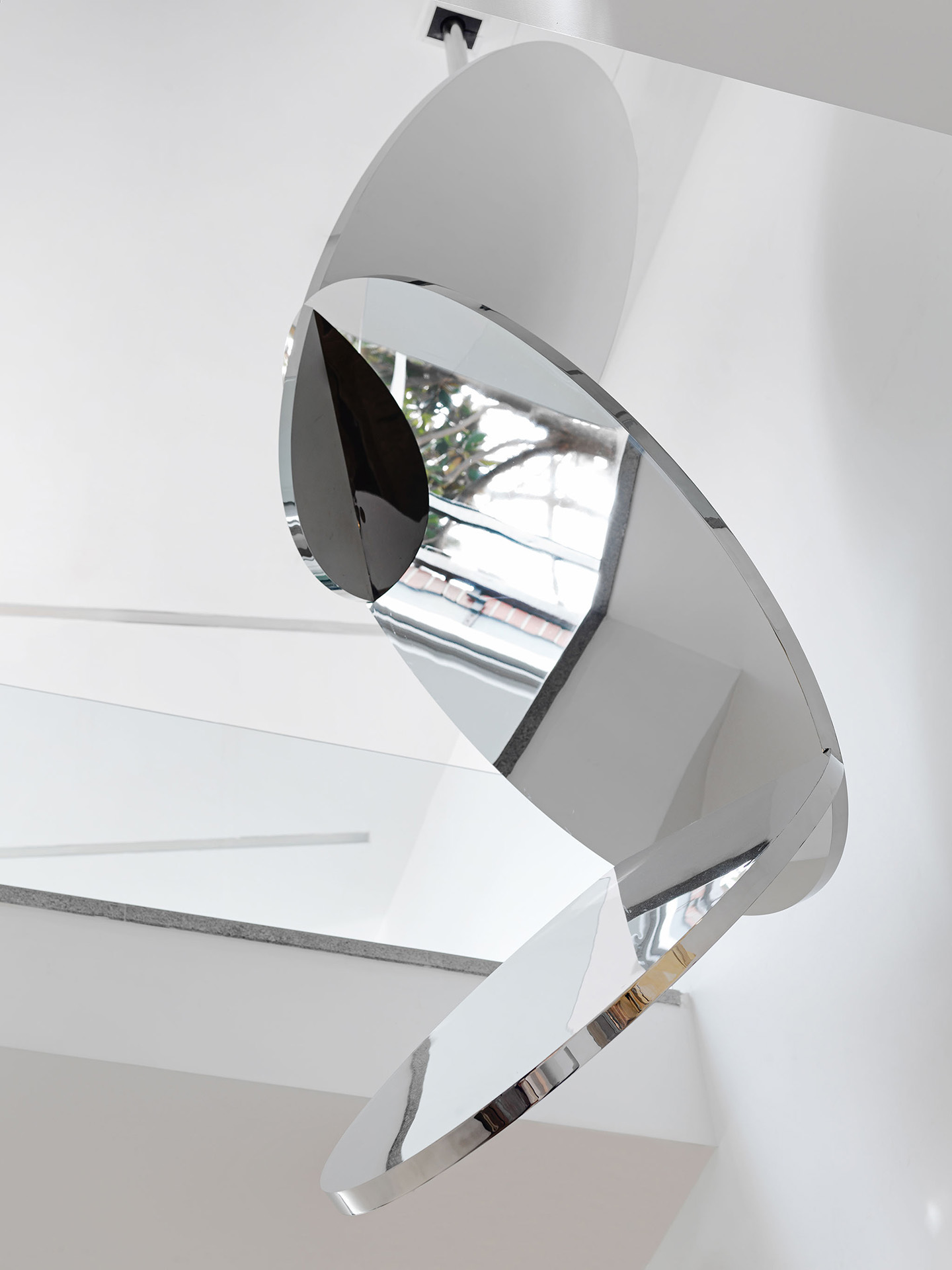
Doug Aitken, Ascending Staircase, 2024.
Installation view; © Doug Aitken, Courtesy of the artist; Borusan Contemporary Art Collection, Istanbul.
Photo credit: Hadiye Cangökçe.
Aitken made Flags and Debris (2021) during the global pandemic when the erosion of social bonds and spheres was accompanied by an even more intense use of digital means of communication. This three-channel video depicts a series of lonely figures clad in cocoon-like cloaks stitched from pieces of fabric, wandering and dancing through a deserted urban landscape. This dystopic terrain seems to materialize what Mark Fisher termed capitalist realism, whereby “all that is left is the consumer-spectator, trudging through the ruins and the relics.”6Yet, amid this particularly dark atmosphere, there appears to be room for transforming the crumbling social ties. Taking up the practice of stitching together throwaway scraps of fabric in his studio during the outbreak, Aitken produced a series of banners, one of which reading Digital Detox (2020) adorns the wall next to Flags and Debris installation room. In these banners produced during a particularly depressing time, stitching emerges as an act of care, repair, and making do. One scene in the three-channel video, where a lonely banner-clad figure encounters and dances with another one, implies that acts of care and repair are also how we connect with others and survive. As we wander in flesh through the streets of our contemporary cities, gleaning and stitching together a series of new impressions and relationalities, we open ourselves and the city to a series of transformations through our acts of collection. Such an opening up of a person to contemporary space and new social bonds seems to be at the core of Aitken’s act of stitching. His stitched-together banners, hung in various locales of the city in the video, intimate our urgent need for collective action and communication that tie us to others: we don’t just stitch together images and impressions, but only together do we stitch new lifeworlds.
1- Don DeLillo, Cosmopolis: A Novel (London: Picador, 2003), 19; 64; 66.
2- William J. Mitchell, Me++: The Cyborg Self and the Networked City (Cambridge and London: The MIT Press, 2003), 19.
3- Guy Debord, The Society of the Spectacle, trans. by Donald Nicholson-Smith (New York: Zone Books, 1995), 22.
4- The phenomenological term lifeworld (lebenswelt) refers to the entirety of lived experiences collectively shared by subjects. For a further discussion, see Edmund Husserl, The Crisis of European Sciences and Transcendental Phenomenology: An Introduction to Phenomenological Philosophy (Evanston: Northwestern University Press, 1970).
5 Guy Debord, The Society of the Spectacle, trans. by Donald Nicholson-Smith (New York: Zone Books, 1995), 18.
6 Mark Fisher, Capitalist Realism: Is There No Alternative? (Hampshire: Zero Books, 2009), 4.
ABOUT THE WRITER
Ekin Pinar is assistant professor at the Architecture department at Middle East Technical University, Turkey. She received her Ph.D. from the History of Art department at the University of Pennsylvania with a dissertation titled “Canyon Collective Artists: Micropolitics in West Coast Experimental Film, 1960-79.” Ekin served as a Zigrosser Fellow as well as a film intern at the Philadelphia Museum of Art where she co-curated with Anna Vallye the experimental film screening series in conjunction with the Léger: Modern Art in the Metropolis exhibition in 2013. In 2021-22, as the 'Canyon Cinema Discovered' Curatorial Fellow, she curated a film exhibition titled Insurgent Articulations. She also worked as the director of a residential Film Culture Program at the University of Pennsylvania and as a docent at the Institute of Contemporary Art, Philadelphia. Her work has appeared in Camera Obscura, animation: an interdisciplinary journal, Film Criticism, Quarterly Review of Film and Video, ARCHNET-IJAR, Journal of Design Studio, Open Screens, and the essay collection Mobility and Fantasy. Ekin’s current research focuses on histories of expanded cinema and moving image exhibition spaces and practices.
